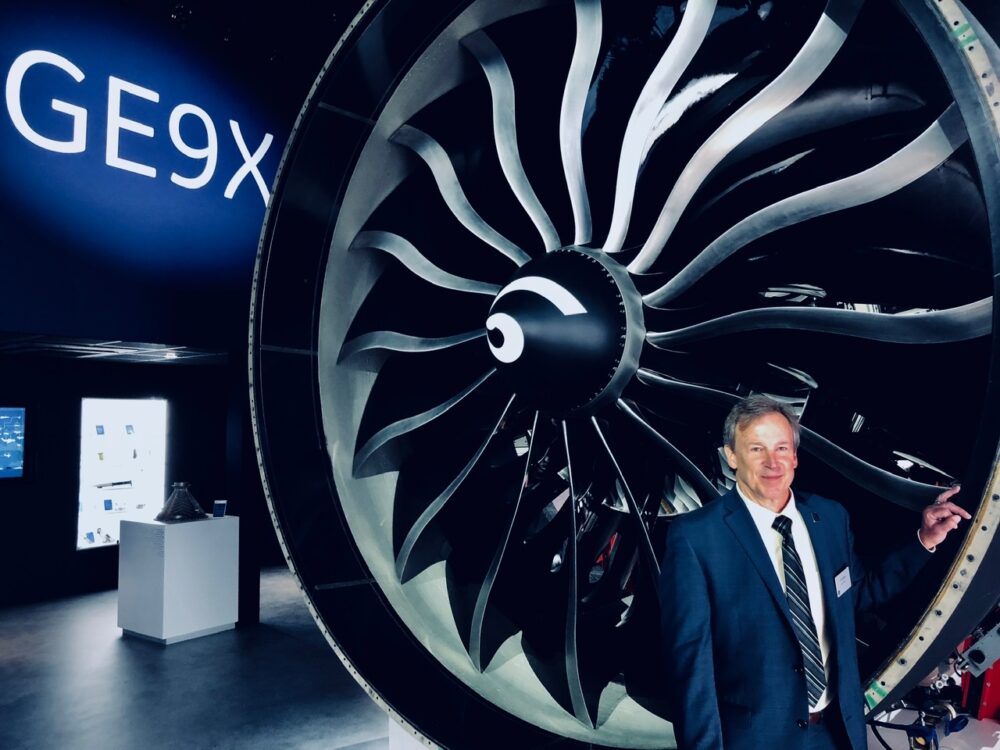The new Boeing 777X took its first flight early in 2020. This is the largest twin-engine widebody aircraft to date and promises higher capacity along with reduced emissions and operating cost. It also has the largest engines ever seen in commercial aviation – and it’s not alone. With improvements in engineering and lightweight materials, both General Electric and Rolls-Royce are developing new, massive engines.

The GE9X engine – developed for the Boeing 777X
Boeing’s latest aircraft, the 777X, set out to offer higher passenger capacity than any other twinjet while also improving efficiency and running costs. It does this in several ways, including innovative folding wingtips to allow greater lift in flight without comprising airport operations. Critical to this are its high power, high-efficiency engines.

General Electric designed the GE9X engine specifically for the Boeing 777X, derived from their GE90 engine used on the Boeing 777. It will be used to power both the 777-8 variant (still in development) and the 777-9 (first flown in early 2020). The GE9X first ran on the ground in 2016 and in air tests in 2018.
As big as a Boeing 737
There are many changes from the GE90 engine, but it’s the size that is the most obvious difference. This is the largest engine ever on a commercial aircraft. At 13 feet in diameter, it is wider than the fuselage of the Boeing 737. It will make quite a sight when it starts appearing next to smaller aircraft at airports.
The diameter of the engine is as wide as the body of a 737 fuselage. Honestly the size is hard to comprehend in photos. pic.twitter.com/xNIgncyKJh
— 😘 (@SnugglePilot) September 29, 2020
As well as being the largest commercial engine built to date, it is also the most powerful. GE reports it achieving 134,300 pounds of thrust: a new world record. For comparison, the GE90 set a record level of 127,900 pounds, and the Soyuz rocket that took Yuri Gagarin into orbit reached 188,000 pounds.
Big but also more efficient
It’s not surprising that the larger GE9X is more powerful and more efficient. A larger fan draws more in more air and uses less energy. The hard part is to increase the engine size whilst also controlling the weight and keeping the overall structure robust. Advances in engineering have made this possible.

Changes with the GE9X include a larger diameter fan with fewer blades (16 instead of 22), the use of lighter (but strong) carbon fiber composite materials and a higher bypass ratio (offering better propulsion efficiency). Overall the GE9X should increase fuel efficiency by 10% over the GE90 engine.
Other engines on the way – the Rolls-Royce Ultrafan
With continued improvements in engineering and materials, larger engines are more of a possibility. GE is not alone in developing large models. Rolls-Royce is currently working on its largest engine to date as well, the Ultrafan.

This will have a blade diameter of 140 inches, much larger than its current Trent engines. Rolls-Royce claims it could be up to 25% more fuel-efficient than the Trent engine.

The engine will likely be made available towards the end of the decade but will begin ground testing in 2021 and later will be tested on Rolls-Royce’s 747 test aircraft.
[ad_2]
Source link


